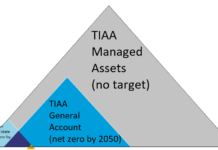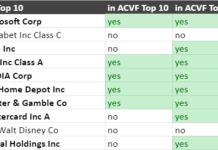John Petersen
In “An Elephant Hunter Explains Market Dynamics” I discussed the two basic types of public companies; earnings-driven companies that are “bought” in top-tier weighing machine markets and event-driven companies that are “sold” in lower-tier voting machine markets. Today I’ll get a bit more granular and show how “sold” companies usually fall into one of two discrete sub-classes that have a major impact on their stock market valuations.
As a starting point, I’ll ignore the China-based companies that are listed in the US because their quirky metrics would only confuse the analysis. Then I’ll break my tracking list of 14 public companies down into three sub-classes as follows:
- Established manufacturers that have earned a competitive position in their target markets and are or have been stable and consistently profitable;
- Transition stage manufacturers that have progressed beyond the R&D stage and are increasing revenues, but have not turned the corner to consistent profitability; and
- Technology developers that are still in the R&D stage and have not completed a credible product launch or started to develop a predictable revenue stream.
In the following graph from Osawa and Miyazaki that summarizes the business dynamics underlying valley of death analysis, the established manufacturers are all beyond the crossover point between the valley of death and success as a business; the transition stage manufacturers are all between the product launch and success as a business; and the technology developers are all between research and product launch.

The following table presents summary valuation data on each of the companies included in the three sub-classes. Dollar amounts are expressed in millions.

Established Manufacturers
When you consider the five first-tier companies including Johnson Controls (JCI), Exide (XIDE), Enersys (ENS), C&D Technologies (CHHP.PK) and Ultralife (ULBI), you’ll note that all of them have long histories and established competitive positions in their target markets. While C&D and Ultralife are currently losing money, they have been profitable in the past.
In general, the members of the established manufacturers class trade on the basis of earnings, have an average price to book value ratio of 1.6 and have an average price to sales ratio of 0.5. While companies in the established manufacturers class usually trade within a reasonable range of their peers, you can occasionally identify special events in the past that are not likely to be repeated in the future. Examples include $48 million in nonrecurring charges reported by C&D for the year ended January 1, 2011 and $53 million in nonrecurring charges reported by Exide for the year ended March 31, 2011. Since both companies are emerging from their own versions of a rough patch, they merit special attention and have a good shot at substantially outperforming their peers in the established manufacturer class.
Transition Manufacturers
When you get into the transition stage manufacturers including Maxwell Technologies (MXWL), A123 Systems (AONE), Ener1 (HEV), Active Power (ACPW) and Valence Technologies (VLNC) the valuation multiples jump abruptly and the price to book and price to sales ratios are also far more variable than they are in established manufacturers class. For transition stage manufacturers, I’ve found that a far more useful metric is a measure I refer to as blue-sky; the difference between a company’s reported book value and its total market capitalization.
Using the blue-sky metric, you’ll see that the blue-sky premiums for all five companies are clustered around an average of $190 million. Once you know what thee blue-sky premium is for a peer group of companies you can use it to help select outliers that are significantly over-valued or under-valued compared to their peers. In the peer group of transition stage storage manufacturers, Maxwell is trading at a relatively rich valuation compared to its peers, but the premium seems to be justified by growth. In comparison, Valence is deeply under water from a book value perspective but maintains a high market price in spite of the ugly fiscal realities. The differences lead me to believe that Maxwell is a hold while Valence is a sell or even a short. At the low end of the spectrum, Ener1 is trading at a deep discount until you consider possible future impairment charges that would bring it into line with its peers by reducing reported book value and increasing blue-sky.
Technology Developers
The third class, technology development companies, includes Altair Nanotechnologies (ALTI), Axion Power International (AXPW.OB), Beacon Power (BCON) and ZBB Energy (ZBB). These companies have not reached the point of a credible product launch, although all of them are approaching a point in their development where a significant revenue ramp over the next couple years seems likely. Like the transition manufacturers, the price to book and price to sales ratios are far too variable to provide useful guidance, however the blue-sky premium which averages $20 million for the class can be a very useful tool and help in identifying outliers like Beacon which currently trades at a significant discount to the peer group.
Inflection Point Investing
At some point in their development, all companies either move up the food chain or drift down. I’ve found that the inflection point between being a transition manufacturer that’s valued on the basis of expectations and being an established manufacturer that’s valued on the basis of earnings can be a difficult and painful time for investors as management strives to meet the quarterly expectations in order to maintain or grow their stock price. While I don’t foresee short-term inflection point for any of the transition stage manufacturers I track, Maxwell and Active Power are the closest and over the next couple years they will experience increasing pressure to meet profit expectations in addition to revenue expec
tations.
As an elephant hunter, the inflection point I’ve always liked best comes during the months immediately before and after a credible product launch. During this period the only things that matter are revenue and the market’s expectations for future ramp rates. It’s generally the time when blue-sky premiums climb from an average of $20 million to something closer to $200 million. It’s usually hard to pinpoint a specific revenue level that marks the inflection point, but it’s also safe to assume that the magic will happen somewhere between $10 million and $40 million in annual revenue. In my experience there’s no other time in the life cycle of a company that offers higher medium-term appreciation potential.
Of the four technology developers I track, the two with the clearest visible paths to a substantial revenue ramp are Beacon and Axion. Beacon recently commissioned its Stephenstown frequency regulation facility and is planning to build a second facility in Pennsylvania later this year. The two facilities should generate annual revenues of $12 to $24 million, depending in large part on the final disposition of a pending pay-for-performance tariff proposal. While $12 million in revenue would likely keep Beacon in the technology development class for a while, approval of the pay-for-performance tariff would probably be enough to move it up into the transition class. Once Axion completes the validation and certification of its automated second generation electrode fabrication line and begins shipping products for demonstration testing by several first tier manufacturing customers, it should be well on the way.
Disclosure: Author is a former director of Axion Power International (AXPW.OB) and holds a substantial long position in its common stock.








